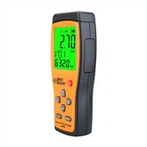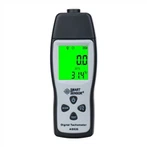Introduction to Tips for Troubleshooting Digital Multimeters
A digital multimeter is a measuring instrument that utilizes the principle of analog-to-digital conversion to convert the measured data into digital quantities and display the measurement results in digital form. Compared with pointer multimeters, digital multimeters are widely used due to their high accuracy, fast speed, large input impedance, digital display, accurate readings, strong anti-interference ability, and high degree of measurement automation. But if used improperly, it can easily cause malfunctions.
Troubleshooting a digital multimeter generally starts with the power supply. For example, after connecting the power supply, if the LCD cell displays, the voltage of the 9V stacked battery should be checked first to see if it is too low; Is the battery lead disconnected. The search for faults should follow the order of "inside first, then outside, easy first, then difficult". The troubleshooting of a digital multimeter can be roughly carried out as follows.
1, Appearance inspection. You can touch the temperature rise of the battery, resistor, transistor, and integrated block with your hand to check if it is too high. If the newly installed battery heats up, it indicates that the circuit may be short circuited. In addition, it is necessary to observe whether the circuit is broken, desoldered, mechanically damaged, etc.
2, Detect the working voltage at all levels. To detect the working voltage at each point and compare it with the normal value, the accuracy of the reference voltage should be ensured first. It is best to use a digital multimeter of the same model or similar model for measurement and comparison.
3, Waveform analysis. Observe the voltage waveform, amplitude, period (frequency), etc. of each key point in the circuit using an electronic oscilloscope. For example, to test whether the clock oscillator starts oscillating and whether the oscillation frequency is 40kHz. If the oscillator has no output, it indicates that the TSC7106 internal inverter is damaged, or it may be an open circuit in external components. The waveform observed at pin {21} of TSC7106 should be a 50Hz square wave, otherwise, it may be due to damage to the internal 200 frequency divider.
4, Measure component parameters. For components within the fault range, online or offline measurements should be conducted, and parameter values should be analyzed. When measuring resistance online, the influence of components connected in parallel should be considered.
5, Hidden troubleshooting. Hidden faults refer to faults that appear and disappear intermittently, with the instrument panel fluctuating between good and bad. This type of fault is quite complex, and common causes include virtual soldering of solder joints, loosening, loose connectors, contact of transfer switches, unstable component performance, and continuous breakage of leads. In addition, it also includes factors caused by external factors. Such as high ambient temperature, high humidity, or intermittent strong interference signals nearby.






